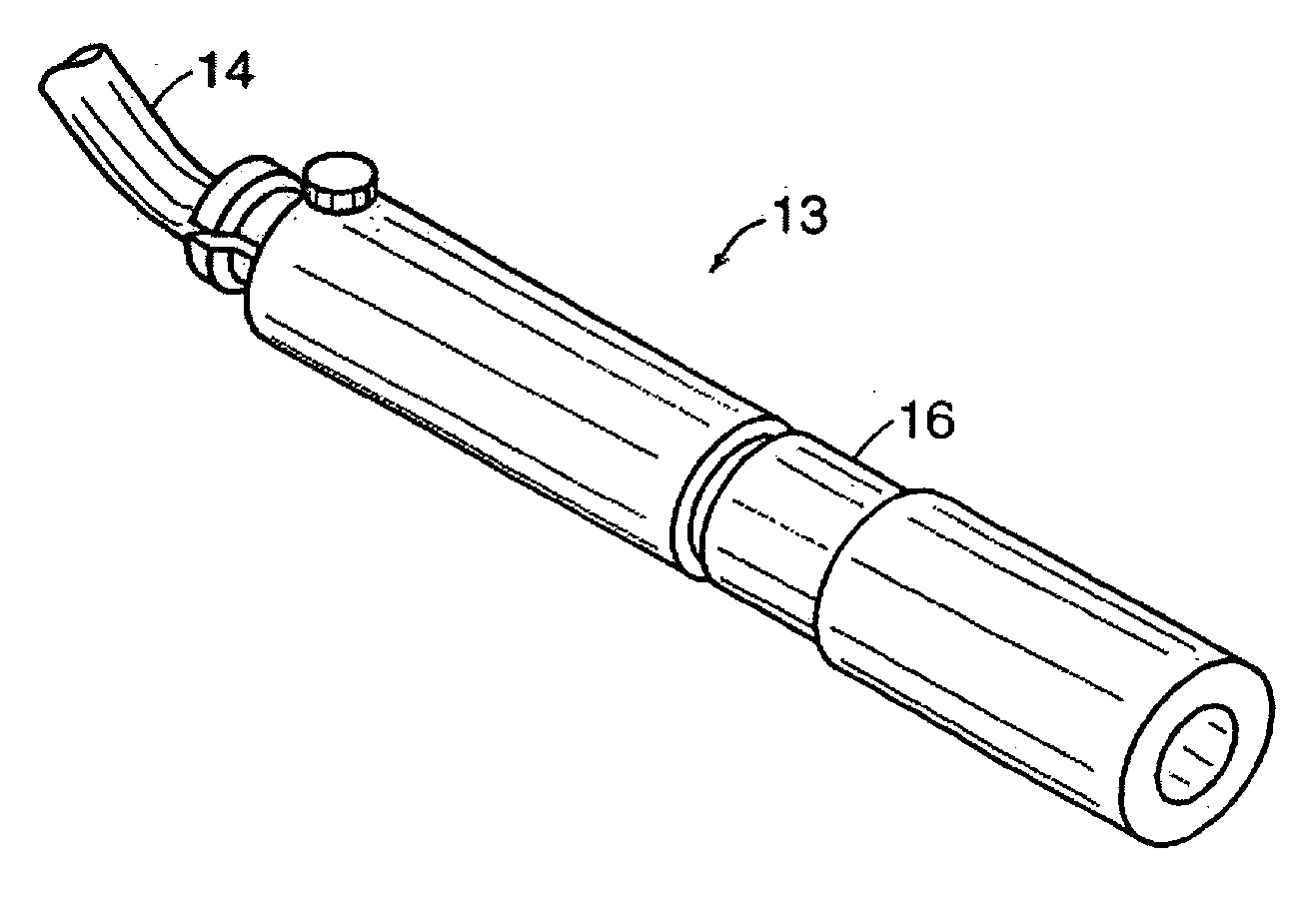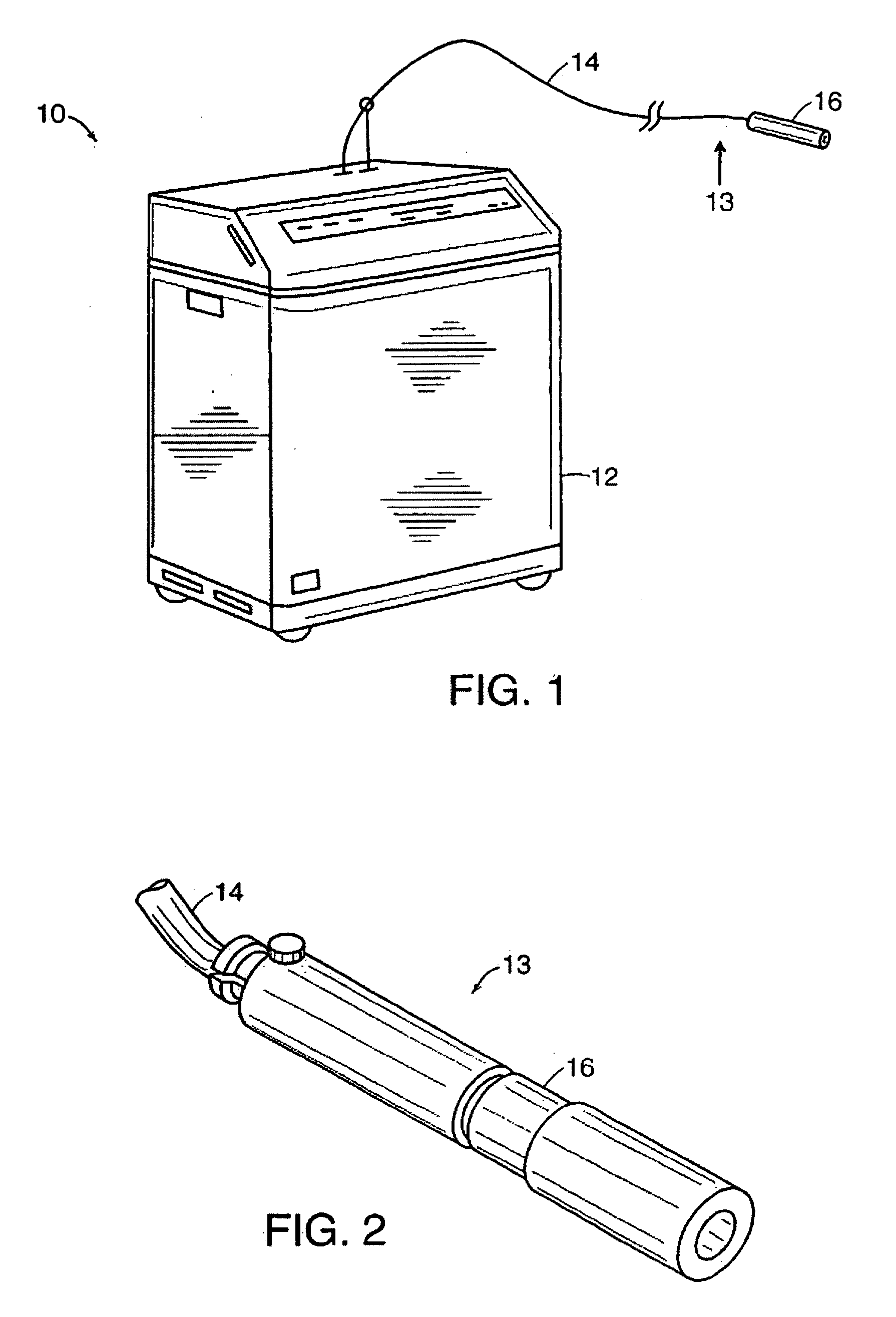Method and apparatus for treating wrinkles in skin using radiation
a technology of human skin and radiation, applied in the field of human skin wrinkle treatment using radiation, can solve the problems of affecting the appearance of skin, so as to avoid injury to the epidermis and upper layers of the dermis, and minimize the effect of pigmentary disturbances
- Summary
- Abstract
- Description
- Claims
- Application Information
AI Technical Summary
Benefits of technology
Problems solved by technology
Method used
Image
Examples
Embodiment Construction
[0019]The present invention contemplates a system and method for removing wrinkles which includes delivering a beam of laser or incoherent radiation to cause sufficient thermal injury in the dermal region of the skin to elicit a healing response to cause the skin to remodel itself, resulting in more youthful looking (i.e., substantially unwrinkled) skin. In particular, thermal injury may be in the form of partial denaturation of the collagen fibers in the targeted dermal region of skin. In one embodiment, the radiation beam has a set of parameter ranges carefully selected to partially denature collagen in the dermis while protecting the epidermis by surface cooling. As a result, a subject treated using the method of the invention is able to have the appearance of wrinkles lessened without damage to the epidermis.
[0020]FIG. 1 is an illustration of a system 10 for practicing the invention. The system 10 includes a radiation source 12 and a delivery system 13. A beam of radiation gener...
PUM
 Login to View More
Login to View More Abstract
Description
Claims
Application Information
 Login to View More
Login to View More - R&D
- Intellectual Property
- Life Sciences
- Materials
- Tech Scout
- Unparalleled Data Quality
- Higher Quality Content
- 60% Fewer Hallucinations
Browse by: Latest US Patents, China's latest patents, Technical Efficacy Thesaurus, Application Domain, Technology Topic, Popular Technical Reports.
© 2025 PatSnap. All rights reserved.Legal|Privacy policy|Modern Slavery Act Transparency Statement|Sitemap|About US| Contact US: help@patsnap.com



